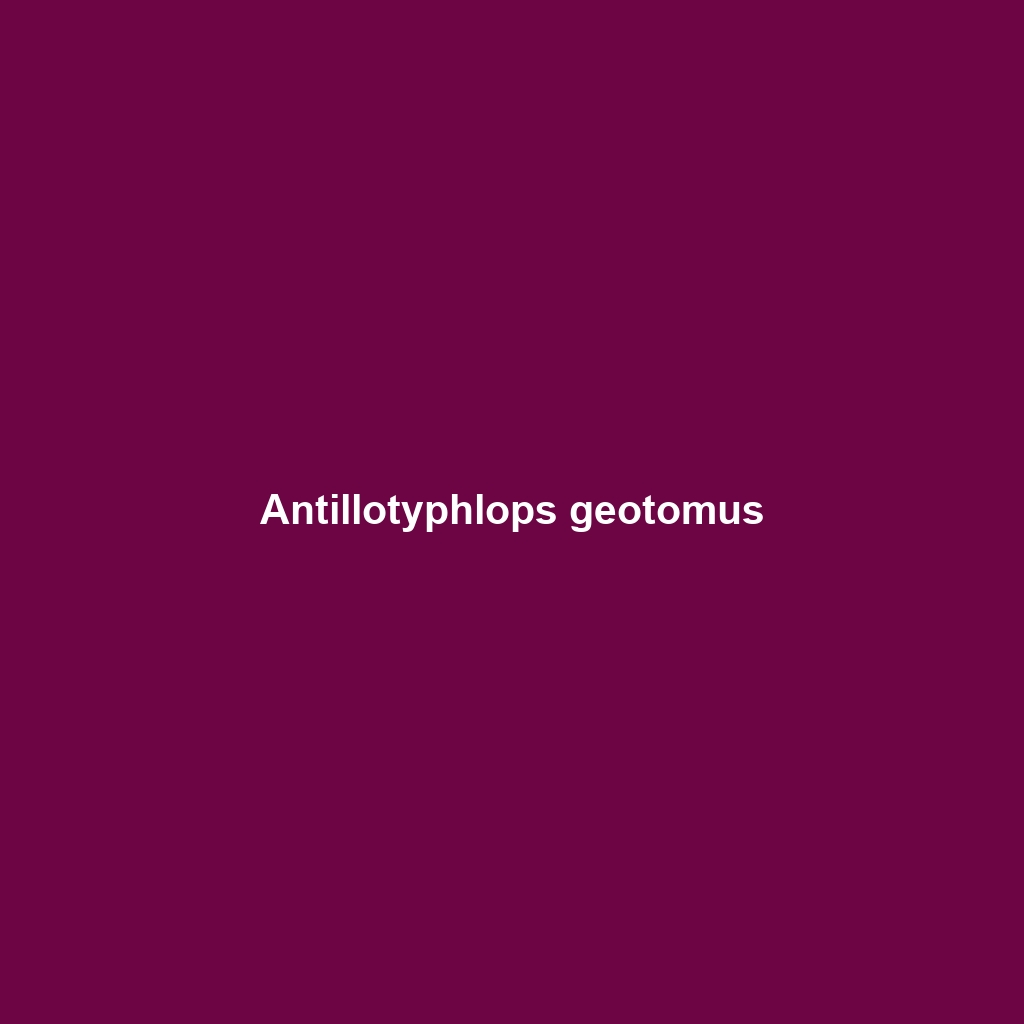Species Description: Antillotyphlops geotomus
Common Name: Antillotyphlops geotomus
Scientific Name: Antillotyphlops geotomus
Habitat
Antillotyphlops geotomus, commonly known as the Lesser Antillean Blind Snake, is primarily found in the Caribbean region, specifically on the islands of Dominica, Saint Lucia, and Saint Vincent. This species prefers tropical moist forests, often inhabiting loose, well-drained soils where it can easily burrow. Its habitat is characterized by a warm climate with high humidity, making it ideal for its underground lifestyle.
Physical Characteristics
The Lesser Antillean Blind Snake measures between 30 to 70 centimeters in length, with a cylindrical, elongated body and a smooth, shiny scale texture. The coloration typically ranges from light brown to gray, often with darker bands, providing effective camouflage in its natural environment. One of the most distinctive features of Antillotyphlops geotomus is its reduced eyes, which are barely visible, reflecting its burrowing adaptation.
Behavior
Antillotyphlops geotomus is a fossorial (burrowing) snake, spending most of its life underground. It is primarily nocturnal, emerging at night to engage in activities such as foraging and mating. This species is known to exhibit a unique behavior of coiling into a tight spiral when threatened, a defense mechanism that protects its vulnerable body against predators.
Diet
The diet of Antillotyphlops geotomus primarily consists of small invertebrates, particularly ants and termites. It uses its highly developed sense of smell to locate its prey within the soil. This feeding habit plays a significant role in controlling insect populations in its habitat.
Reproduction
Reproduction in Antillotyphlops geotomus typically occurs during the wetter months of the year. Mating involves the male using his specialized spurs to stimulate the female. Females lay clusters of eggs, often in moist soil or decaying matter, providing a protective environment for the developing offspring. Hatchlings typically emerge after several weeks, showing a miniature version of their adult form.
Conservation Status
According to the International Union for Conservation of Nature (IUCN), Antillotyphlops geotomus is currently classified as Vulnerable. Habitat destruction due to agricultural expansion and urban development poses significant threats to its population. Conservation efforts are essential to protect this species and its natural habitat.
Interesting Facts
Antillotyphlops geotomus is one of the few blind snake species found outside of the continental areas, emphasizing its unique evolutionary adaptation to island life. Furthermore, its ability to burrow efficiently makes it a fascinating subject of study in terms of ecological impact and soil health.
Role in Ecosystem
As a predator of ants and termites, Antillotyphlops geotomus plays a crucial role in maintaining the balance of its ecosystem. By controlling the populations of these insects, it helps promote a healthy soil environment, which in turn benefits plant life and other species. Its existence contributes to the overall biodiversity of the regions it inhabits.

